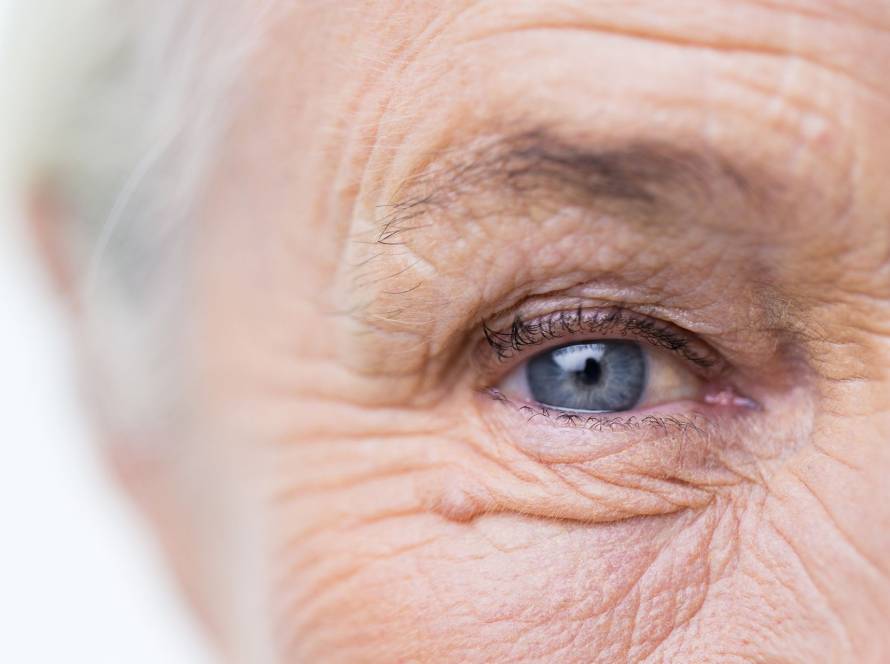Our immune system has two remarkable defense mechanisms that protect our bodies from harmful invaders. This piece explores the types of immunity that protect us each day. We’ll learn what is innate and adaptive immunity, and how these systems work independently and together. Understanding these systems is vital to maintain optimal health and longevity.
How does innate and adaptive immunity protect the body?
Innate and adaptive immunity are the two main components of the immune system that work together to protect the body from infections. Innate immunity is the body’s first line of defense, it’s fast, non-specific and always active, using barriers like skin and cells such as macrophages and natural killer cells to attack invaders.
Adaptive immunity, on the other hand, is slower but highly specific. It involves T cells and B cells that recognize particular pathogens and remember them for future defense. While innate immunity responds immediately to general threats, adaptive immunity creates targeted, long lasting protection. Both systems are essential for a strong and balanced immune response.
What is innate immunity?
The body’s first line of defense against invading pathogens is innate immunity. It responds quickly (within minutes to hours) and works in a non-specific way. This ancient defense mechanism exists in all multicellular organisms, unlike adaptive immunity.
Physical and chemical barriers
Our body stops pathogens from entering through physical and anatomical barriers. The skin creates a waterproof shield with tightly connected keratinocytes in extracellular matrix proteins, which protects us both physically and chemically. The respiratory, digestive and genitourinary tracts have mucous membranes that create continuous epithelial barriers and produce antimicrobial peptides like defensins, according to research.
The body has several other defensive mechanisms:
- Mechanical barriers: the respiratory tract’s cilia push mucus and trapped pathogens away from lungs, while the gut uses peristalsis;
- Chemical defenses: the stomach’s acid, sweat’s acidity and enzymes found in tears and saliva;
- Biological barriers: beneficial bacteria that fight pathogens for resources and space.
Key innate immune cells: macrophages, neutrophils, NK cells
Specialized immune cells react immediately when pathogens break through these barriers. Neutrophils reach infection sites first by following chemical signals. These cells contain granules with enzymes that destroy microbes. Macrophages live longer than neutrophils and perform multiple functions. They eat pathogens, present antigens, release cytokines and help repair tissue after infection.
Natural Killer (NK) cells target and eliminate virus-infected or cancerous cells through cytotoxic activity. They help regulate cell-mediated responses. NK cells also produce interferon-gamma that activates macrophages and other immune cells, which creates an essential connection in immunological surveillance.
How innate immunity detects pathogens
Pattern Recognition Receptors (PRRs) help the innate immune system identify pathogens. These receptors detect Pathogen-Associated Molecular Patterns (PAMPs), conserved structures that exist in microorganisms but not in host cells. PRRs remain constant, unlike adaptive immunity receptors, which suggests their non-specific nature.
The main PRR types include Toll-like receptors (TLRs), NOD-like receptors (NLRs), C-type lectin receptors and RIG-I-like receptors. Each type recognizes different components of pathogens.
The role of inflammation and cytokines
The innate immune system starts inflammation after detecting pathogens. This response causes redness, swelling, heat and pain through chemical messengers called cytokines. Tumor necrosis factor (TNF-α), interleukin-1 (IL-1) and interleukin-6 (IL-6) are the primary inflammatory cytokines.
Cytokines coordinate immune responses as chemical messengers. They bring more immune cells to infection sites, activate cells to fight invaders and control inflammation levels. These molecules show pleiotropic properties, affect multiple cell types and demonstrate redundancy. A single cytokine can regulate various functions, while multiple cytokines might perform similar tasks.
What is adaptive immunity?
The adaptive immune system serves as the body’s specialized defense mechanism. It recognizes and responds to specific threats with remarkable precision. This system depends on two primary types of lymphocytes, T cells and B cells, that target particular pathogens and create lasting protection.
T cells and their functions
T cells grow to maturity in the thymus and exist in several distinct categories with specialized roles. CD8+ T cells (cytotoxic T cells) eliminate infected or malignant cells by interacting with MHC class I complexes. These cells trigger apoptosis in target cells through perforin and granzymes release or Fas/FasL interactions.
CD4+ T helper cells identify antigens presented by MHC class II molecules and boost immune responses by activating other immune cells. Helper cells transform into several subtypes: Th1 cells curb intracellular pathogens, Th2 cells target parasites, Th17 cells protect mucosal surfaces and T regulatory cells maintain immune tolerance.
B cells and antibody production
B cells develop in bone marrow and represent the humoral arm of adaptive immunity. They transform into plasma cells that produce antibodies or memory cells that offer long-term protection after activation. B cells remarkable antibody diversity comes from V(D)J recombination, where gene segments arrange randomly to create unique antigen-binding sites.
Each mature B cell displays just one type of receptor through allelic exclusion. B cells multiply and undergo somatic hypermutation after activation. This process creates antibodies with increasing affinity for specific antigens as time passes.
Immunological memory and vaccines
The adaptive immunity’s most distinctive feature lies in immunological memory, knowing how to mount faster, stronger responses when pathogens reappear. Memory B and T cells stay active after infection clears, often lasting decades. These mechanisms are the foundations of vaccination, where exposure to harmless pathogen parts creates protective immunity without causing disease. Notwithstanding that, memory duration varies between vaccines. Some need boosters while others protect for life.
How adaptive immunity develops over time
Adaptive immunity starts with lymphocyte development from hematopoietic stem cells. This system exists at birth but matures through exposure to environmental antigens. Initial responses take several days because naive lymphocytes need activation. Secondary responses happen much faster thanks to memory cells. The adaptive immune system refines its repertoire throughout life. It maintains balance between effective pathogen elimination and autoimmunity prevention.
Innate immunity vs adaptive immunity: key differences
The difference between innate and adaptive immunity goes beyond basic categories and shows how these systems defend our bodies. These systems work together, but their mechanisms work quite differently.
Speed and specificity of response
Our innate immune system jumps into action almost right away when threats appear, usually within minutes to hours after infection. The adaptive immunity takes days to weeks to fully develop, especially when we have first exposure. Their recognition methods explain this time gap. The innate immunity uses a fixed set of germline-encoded pattern recognition receptors (PRRs). The adaptive immunity creates diverse antigen receptors through somatic recombination. People often think innate immunity lacks specificity, but new research shows both systems have varying levels of specificity in molecular recognition.
Memory and long term protection
The biggest difference between these systems lies in immunological memory. Our adaptive immune system remembers previous encounters and responds faster and stronger when exposed again. Memory B and T cells stick around after fighting off infections. They can last for decades or even lifetimes with diseases like measles. This protection continues without needing the original antigen to stay present. The innate immunity plays a vital role but can’t create this specific long-term memory.
Types of immune cells involved
Each system has its own specialized cell army. We relied mainly on myeloid progenitor cells in innate immunity, macrophages, neutrophils, dendritic cells, plus Natural Killer cells that come from lymphoid stem cells. The adaptive immune system depends on lymphocyte groups: T cells (both helper CD4+ and cytotoxic CD8+) and antibody-producing B cells.
How each system handles pathogens
The innate system spots conserved pathogen-associated molecular patterns (PAMPs) through a limited receptor set. These PRRs can detect most microbes despite this limitation. The adaptive immunity’s vast receptor diversity lets it recognize almost any antigen. Repeated exposures help adaptive responses improve through affinity maturation and clonal selection. The innate responses stay consistent whatever the exposure frequency.
How innate and adaptive immunity work together
The immune system’s two arms work together as a connected network, not as separate parts. They protect us from pathogens through advanced communication and coordinated responses that work in perfect harmony.
Dendritic cells as a bridge
Dendritic cells (DCs) blend the innate and adaptive immunity systems together. These “sentinels” grab antigens from tissues, mature and move to lymph nodes to activate naive T cells. DCs can process and present antigens through MHC molecules in a special way. DCs not only activate lymphocytes but also create tolerance to self-antigens, which stops autoimmune reactions, according to studies.
Cytokine signaling between systems
Cells communicate across long distances through cytokine signals, which helps local immune responses work together globally. The signals use many molecular messengers like interleukins, interferons and tumor necrosis factors. These cytokines attach to specific receptors on target cells and trigger signaling cascades that conclude with gene expression. The immune response adjusts itself by controlling cytokine production and consumption rates.
Sequential activation and coordination
The immune response follows these steps:
- Pattern recognition receptors detect pathogens and trigger innate responses;
- Antigen-presenting cells process and present antigens;
- Activated DCs boost co-stimulatory molecules and move to lymph nodes;
- T and B lymphocytes activate through antigen presentation;
- Activated adaptive cells work with innate components through cytokine networks.
This sequence will give a proper response to different threats, as specific microbial signals activate immune defenses in a controlled way.
The human immune system showcases biological defense engineering at its finest. Innate and adaptive immunity work as distinct yet complementary guardians of health. These two systems maintain a delicate balance throughout life, one system provides quick, broad protection while the other delivers precision and memory. Learning about this complex relationship gives us great insights into disease prevention and treatment.


